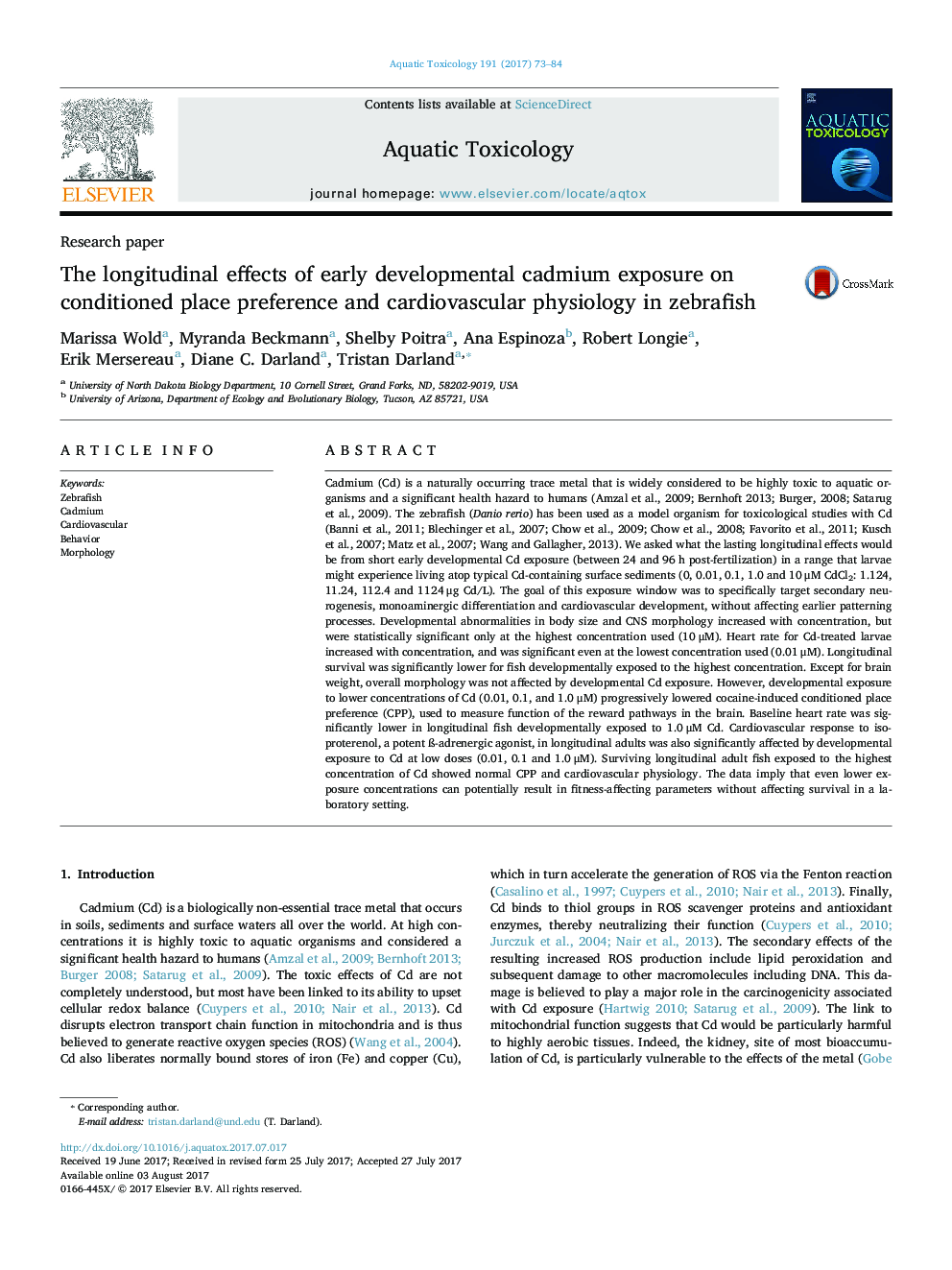| کد مقاله | کد نشریه | سال انتشار | مقاله انگلیسی | نسخه تمام متن |
|---|---|---|---|---|
| 5764097 | 1625914 | 2017 | 12 صفحه PDF | دانلود رایگان |
- Developmental exposure to Cd significantly decreased body, eye, and brain size but increased heart rate of 5Â dpf larvae.
- Longitudinal survival of fish treated with Cd during development was unaffected except at the highest concentration used.
- Developmental Cd exposure progressively decreased CPP response in adult fish, except that survived the highest dose.
- Base line heart rate was significantly lower in adult fish treated with 1.0 μM Cd during development.
- Cardiovascular response to isoproterenol was significantly reduced in adult fish treated with low Cd during development.
Cadmium (Cd) is a naturally occurring trace metal that is widely considered to be highly toxic to aquatic organisms and a significant health hazard to humans (Amzal et al., 2009; Bernhoft 2013; Burger, 2008; Satarug et al., 2009). The zebrafish (Danio rerio) has been used as a model organism for toxicological studies with Cd (Banni et al., 2011; Blechinger et al., 2007; Chow et al., 2009; Chow et al., 2008; Favorito et al., 2011; Kusch et al., 2007; Matz et al., 2007; Wang and Gallagher, 2013). We asked what the lasting longitudinal effects would be from short early developmental Cd exposure (between 24 and 96 h post-fertilization) in a range that larvae might experience living atop typical Cd-containing surface sediments (0, 0.01, 0.1, 1.0 and 10 μM CdCl2: 1.124, 11.24, 112.4 and 1124 μg Cd/L). The goal of this exposure window was to specifically target secondary neurogenesis, monoaminergic differentiation and cardiovascular development, without affecting earlier patterning processes. Developmental abnormalities in body size and CNS morphology increased with concentration, but were statistically significant only at the highest concentration used (10 μM). Heart rate for Cd-treated larvae increased with concentration, and was significant even at the lowest concentration used (0.01 μM). Longitudinal survival was significantly lower for fish developmentally exposed to the highest concentration. Except for brain weight, overall morphology was not affected by developmental Cd exposure. However, developmental exposure to lower concentrations of Cd (0.01, 0.1, and 1.0 μM) progressively lowered cocaine-induced conditioned place preference (CPP), used to measure function of the reward pathways in the brain. Baseline heart rate was significantly lower in longitudinal fish developmentally exposed to 1.0 μM Cd. Cardiovascular response to isoproterenol, a potent Ã-adrenergic agonist, in longitudinal adults was also significantly affected by developmental exposure to Cd at low doses (0.01, 0.1 and 1.0 μM). Surviving longitudinal adult fish exposed to the highest concentration of Cd showed normal CPP and cardiovascular physiology. The data imply that even lower exposure concentrations can potentially result in fitness-affecting parameters without affecting survival in a laboratory setting.
Journal: Aquatic Toxicology - Volume 191, October 2017, Pages 73-84
